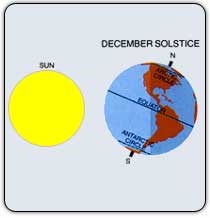
Click here for the Introduction to The Weather Alternative
How Long-Range Forecasts Are Made
January 12, 2007 will mark the 119th anniversary of the Children’s Blizzard. (see photo above) Also known as the Schoolhouse Blizzard or the Schoolchildren’s Blizzard, this powerful storm hit the U.S. Plains unexpectedly on January 12, 1888. Only those who lived close to telegraph offices or railroad stations received news of the approaching storm from the U.S. Signal Corps. Many people, however, were caught unaware. Children were trapped in one-room schoolhouses or met their fate trying to find their way back home. Farmers were caught without protection taking care of their livestock as were family members doing errands in town. It is estimated that 235 people died that day on the Dakota-Nebraska prairie—more than a hundred of them children.
The storm roared out of the northwest on a day mild enough for children to walk to school in their shirt-sleeves or without hats and jackets. Within just a few hours, temperatures dropped from around 70 degrees Fahrenheit to minus twenty or more accompanied by horizontal snow and hurricane-force winds.
The lives of surviving children, parents, farmers, and teachers were drastically altered. The new science of post-traumatic growth, to our surprise, finds that enduring such harrowing ordeals ultimately changes many people for the better. They are transformed by tribulation; giving credence to the old saying “What doesn’t kill you can actually make you stronger.”
Rich Tedeschi, a professor of psychology at the University of North Carolina in Charlotte, when talking about people that have survived traumatic experiences says, “People don’t say that what they went through was wonderful. They weren’t meaning to grow from it. They were just trying to survive. But in retrospect, what they gained was more than they anticipated.”
The astro-meteorology behind the Children’s Blizzard shows that on the 11th and 12th of January Mars conjoined Uranus as Mercury made a 90 degree angle to Mars and Uranus. Mars-Uranus contacts indicate acute, energetic, erratic action and provoke wind velocities of varying intensities. Mercury-Uranus is known to provoke falling temperatures and erratic gusts of wind. Mercury-Mars action indicates sudden brief spurts of whipping winds.
Solar and lunar eclipse charts frequently are the precursors of major weather phenomena. In the case of the Children’s Blizzard, the previous lunar eclipse boasted a Jupiter-Neptune opposition which correlates to low barometric pressure and above normal precipitation.
This January, roughly from the 27th through the 30th, shows that the solar eclipse of March 29, 2006 will be activated. The implications are that a powerful storm, perhaps a blizzard, will develop over the Plains and push eastward across the Mississippi Valley and toward the East Coast. I’m in no wise thinking that this storm will be anything like the Children’s Blizzard of 1888. The similarity resides in the fact that, in both cases, eclipse charts are involved. The planetary energies involved, however, are different. This January we will be dealing with a Mercury-Saturn opposition, a sure harbinger of a strong low pressure system.
Satellite view of the Blizzard of 1993



